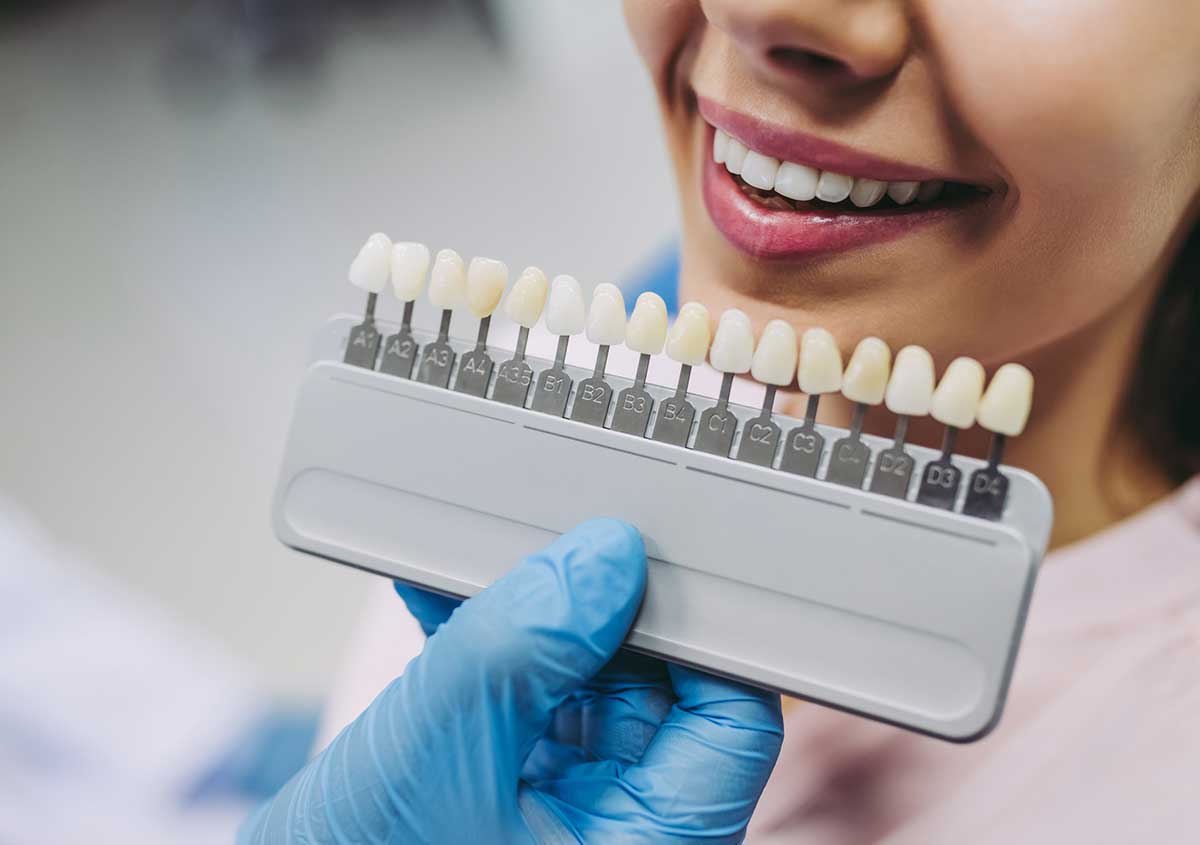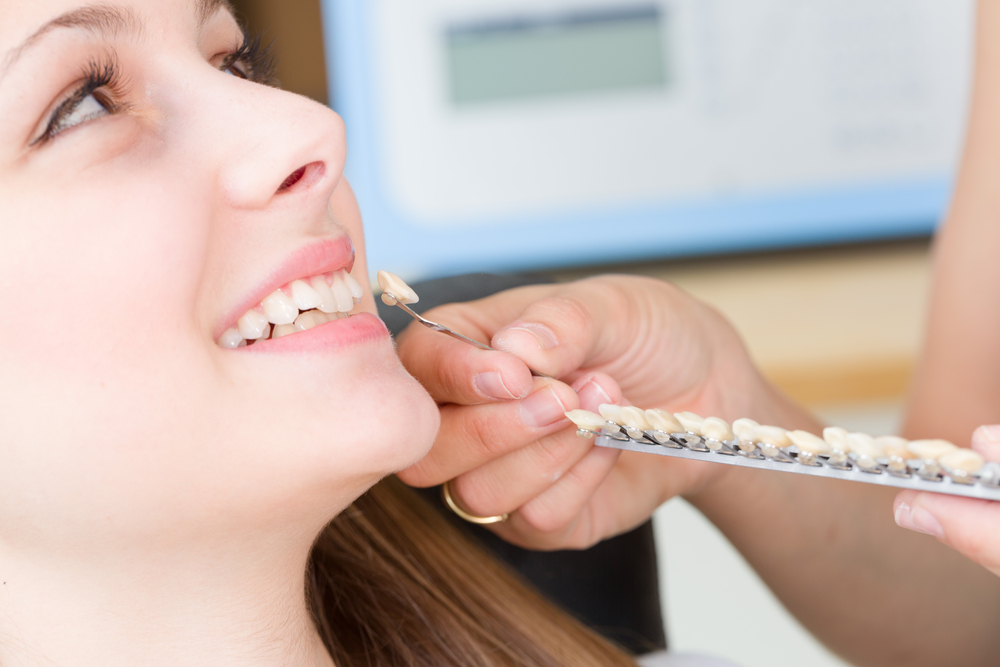All You Need To Know About Labial Veneers

We want to avoid being in a situation whereby we have to hide our smiles away from people. Most of the time, coloured or broken teeth cause self-esteem in people.
Many patients go to the dental clinic like the Dentakay dental clinic with curiosity and many questions to ask, one of which is about labial veneers.
The full information will be given on labial veneers. And to understand what labial veneers are, we need to understand what dental veneers entail clearly.
Dental Veneers
Dental veneers are thin shells formed in the shape of a tooth. They are attached to the front surface of the teeth. They are mostly used for cosmetic dental restorations. There are different types of dental veneers based on the materials they are made of.
Dental veneers are used to correct cosmetic problems like discoloured teeth, broken teeth, smaller-average teeth, and chipped teeth. It helps to give a beautiful smile and enhances mouth health.
What are Labial Veneers?

Labial veneers can also be called Laminate veneers. Labial veneers are wafer-thin layers of material made in the tooth’s shape to correct cracks or enhance cosmetic appearance.
The benefit of a “labial veneer” is that they are more conservative and likely to fracture or debond. They can also be used for cosmetic purposes.
Labial Veneers: Dental procedure
Labial veneers have the same function as veneers, and sometimes they are used interchangeably. Its difference is that it is much thinner and requires less of a mouth of enamel to be placed upon.
Veneers are made of porcelain, composite synthetic resin, such as acrylic polymer or poly methyl methacrylate. These resin liquid materials are converted to permanently hardened substances used in dental clinics because of their ability to bond with the tooth. As well as its ability to look exactly like the natural colour of the teeth.
The porcelain veneer is prepared in the lab. And performed on the labial surface. It is referred to as labial because it comes in contact with the lips. As its name implies, “labial veneers” is about the lips. This procedure is often used to correct gaps in the teeth which can be medically referred to as diastema between the front teeth.
The fabricated process made by the dentist is easy and includes the removal of decayed or any existing weak teeth. Once your dentist makes an impression of the teeth, they will be sent to the lab to fabricate the same. While your fabricated tooth is being made, your dentist will provide you with a temporary veneer.
Once your veneer arrives, you will be called back to the clinic to have your dentist fix it on your tooth. The final step is done by preparing the tooth for bonding. Etching it with a mild acid solution and then glueing the veneer onto the teeth.
Shaping and polishing is the additional process of the labial veneer fixing.
Codes For Labial Veneers

Some codes are used to report “labial Veneers” they include,
-
D2960:Labial Veneers(Resin Laminate ) Direct
This code reports directly fabricated resin veneers placed on the labial surface tooth. A resin veneer is fabricated to treat fractured or discoloured teeth. It should be reported according to several teeth. And should be used only when reporting porcelain veneers.
-
D2961:Labial Veneers(Resin Laminate) Indirect
Laboratory(indirect) resin-fabricated veneers are reported using this code. The doctor requests material from the laboratory after the teeth have been examined instead of more costly materials like porcelain.
-
D2962: Labial Veneers(Porcelain Laminate)Indirect
Porcelain veneers are the most common treatment for improving the patient’s smile but are only sometimes covered by benefits. This is used to report porcelain veneers.
Labial Veneers: Cost

Another popular question among patients in our dental clinic is the cost of labial veneers. This section will discuss the cost of the resin laminate labial veneer and the porcelain laminate labial veneer.
Resin laminate labial veneer cost
Since resin is a material that can be obtained at a not-so-expensive cost, the resin laminate labial veneer is always cheaper than its counterparts.
The cost of resin laminate labial veneer is about $670 per tooth.
Porcelain laminate labial veneers cost
Most times, the cost of porcelain laminate labial veneer is more expensive than resin laminate labial veneer because porcelain materials are more expensive. Read this article to learn more about full mouth veneers cost: what to consider.
The average cost of porcelain laminate labial veneer is about $1,100.
Note that labial veneers are considered cosmetic dental procedures, so the cost is not covered by insurance.
Frequently asked questions about labial veneers.
In our research, we realized several people ask these questions online about labial veneers.
Here is the answer to some of these questions.
How long do labial veneers last?
When properly maintained and cared for, labial veneers last for about 8-10 years.
How can I care for my labial veneers?

Once you have your labial veneers fixed, you must care for them just like you have been taking care of your natural teeth.
Brush twice daily and floss regularly. By doing this, your labial veneer will last as it should.
Are labial veneers considered cosmetic products?
Yes! Labial veneers are seen as cosmetic products that are used to enhance the aesthetics of the teeth, and hence they are not covered by insurance.
How painful is the labial veneer procedure?
Pain is relative, so we cannot say whether the procedure is painful or not. Some patients will experience pain, while some will not. Also, the level of pain experienced by patients will vary.
Final thoughts
The labial veneer is a type of veneer that can be used to beautify a patient’s smile and make them more confident.
Unlike other veneers, they are super thin and look just like natural teeth.
Now that you know what labial veneers are, you should consult your dentist to know if they suit your dental condition.




